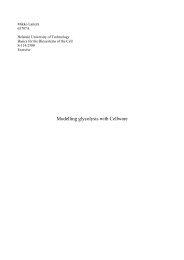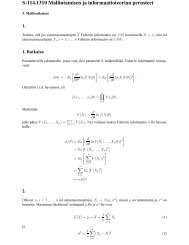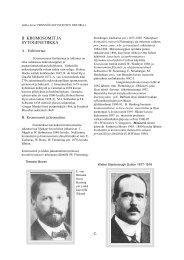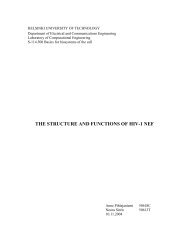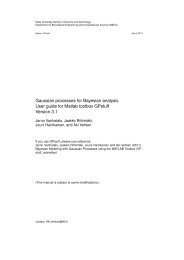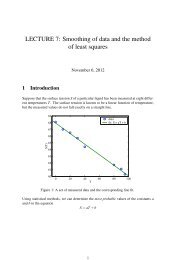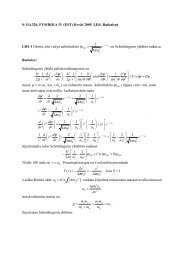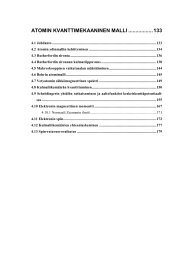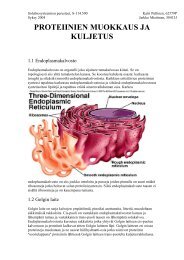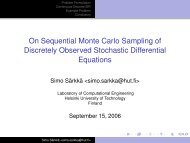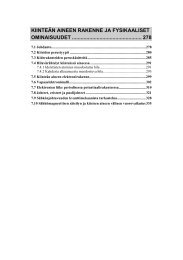LECTURE 3: Polynomial interpolation and numerical differentiation
LECTURE 3: Polynomial interpolation and numerical differentiation
LECTURE 3: Polynomial interpolation and numerical differentiation
Create successful ePaper yourself
Turn your PDF publications into a flip-book with our unique Google optimized e-Paper software.
2 <strong>Polynomial</strong> <strong>interpolation</strong><br />
2.1 Interpolating polynomial<br />
Given a set of n+1 data points {x i ,y i }, we want to find a polynomial curve that passes<br />
through all the points. Thus, we look for a continuous curve which takes on the values y i<br />
for each of the n+1 distinct x i ’s.<br />
A polynomial p for which p(x i )=y i when 0≤i≤n is said to interpolate the given set of<br />
data points. The points x i are called nodes.<br />
The trivial case is n=0. Here a constant function p(x)=y 0 solves the problem.<br />
The simplest case is n=1. In this case, the polynomial p is a straight line defined by<br />
( ) ( )<br />
x−x1 x−x0<br />
p(x)= y 0 + y 1<br />
x 0 − x 1 x 1 − x<br />
( ) 0<br />
y1 − y 0<br />
= y 0 + (x−x 0 )<br />
x 1 − x 0<br />
Here p is used for linear <strong>interpolation</strong>.<br />
As we will see, the interpolating polynomial can be written in a variety of forms, among<br />
these are the Newton form <strong>and</strong> the Lagrange form. These forms are equivalent in the<br />
sense that the polynomial in question is the one <strong>and</strong> the same (in fact, the solution to the<br />
<strong>interpolation</strong> task is given by a unique polynomial)<br />
We begin by discussing the conceptually simpler Lagrange form. However, a straightforward<br />
implementation of this form is somewhat awkward to program <strong>and</strong> unsuitable for<br />
<strong>numerical</strong> evaluation (e.g. the resulting algorithm gives no error estimate). The Newton<br />
form is much more convenient <strong>and</strong> efficient, <strong>and</strong> therefore, it is used as the basis for<br />
<strong>numerical</strong> algorithms.<br />
2.2 Lagrange form<br />
First define a system of n+1 special polynomials l i known as cardinal functions. These<br />
have the following property:<br />
{<br />
0 if i≠ j<br />
l i (x j )=δ i j =<br />
1 if i= j<br />
The cardinal functions l i can be written as the product of n linear functions (the variable<br />
x occurs only in the numerator of each term; the denominators are just numbers):<br />
( ) x−x j<br />
l i (x)= (0≤i≤n)<br />
x i − x j<br />
=<br />
n<br />
∏<br />
j≠i<br />
j=0<br />
( )( )<br />
x−x0 x−x1<br />
...<br />
x i − x 0 x i − x 1<br />
Thus l i is a polynomial of degree n.<br />
( )( ) ( )<br />
x−xi−1 x−xi+1 x−xn<br />
...<br />
x i − x i−1 x i − x i+1 x i − x n




